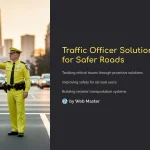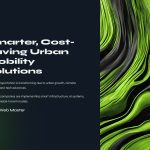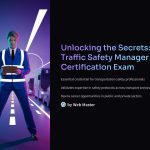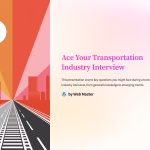 The global transportation industry is currently navigating a pivotal transformation. With growing urban populations, climate concerns, and technological advancements, innovative solutions are emerging to tackle long-standing mobility issues. Cities and companies alike are experimenting with smart infrastructure, AI-powered traffic systems, and sustainable transit models. These trends not only promise to enhance commuter experiences but also significantly reduce operational costs. This analysis dives into compelling case studies from leading cities and corporations that are setting new standards in modern transportation—offering valuable lessons for businesses aiming to improve efficiency, scalability, and sustainability in this dynamic sector.
The global transportation industry is currently navigating a pivotal transformation. With growing urban populations, climate concerns, and technological advancements, innovative solutions are emerging to tackle long-standing mobility issues. Cities and companies alike are experimenting with smart infrastructure, AI-powered traffic systems, and sustainable transit models. These trends not only promise to enhance commuter experiences but also significantly reduce operational costs. This analysis dives into compelling case studies from leading cities and corporations that are setting new standards in modern transportation—offering valuable lessons for businesses aiming to improve efficiency, scalability, and sustainability in this dynamic sector.

Smart Traffic Management: Barcelona’s AI-Powered Urban Flow
Barcelona has long been at the forefront of smart city development, and its traffic management system is a shining example. The city implemented an AI-powered traffic monitoring system that integrates data from road sensors, surveillance cameras, and GPS in public buses. This data enables real-time decision-making for traffic lights and lane changes, significantly reducing congestion during peak hours.
The project, known as “SMOU,” also provides an integrated mobility app for citizens, combining parking, bike-sharing, and transit services into a seamless experience. As a result, Barcelona has seen a 21% reduction in travel time and a 13% increase in public transit usage over five years. This case illustrates how data-driven innovation can lead to efficient, eco-friendly traffic systems that improve overall urban mobility.

Zero Emission Public Transit: Oslo’s Electric Bus Fleet
Oslo has committed to becoming the first major city with an entirely electric public transport system. With the electrification of over 450 buses, the city has reduced its public transport emissions by 95%. This ambitious plan not only combats pollution but also slashes operating costs—electric buses cost approximately 40% less to maintain than diesel alternatives.
The initiative is backed by subsidies and incentives from the Norwegian government, alongside partnerships with energy and tech firms. Oslo’s model showcases how policy alignment, technological infrastructure, and financial incentives can drive green mobility at scale, making it a benchmark for cities worldwide.

Mobility-as-a-Service (MaaS): Helsinki’s Whim App Success
In Helsinki, the Whim app offers a prime example of Mobility-as-a-Service in action. Users can plan, book, and pay for various transportation methods—buses, taxis, bikes, and rental cars—through one app. The model operates on a subscription basis, which incentivizes users to shift away from car ownership.
This ecosystem has significantly reduced traffic congestion and promoted the use of public transit. With a 23% increase in shared mobility usage and a 12% drop in private car use within two years, Helsinki demonstrates how app-based mobility services can transform urban commuting behaviors while supporting sustainability goals.

Integrated Payment Solutions: London’s Contactless Revolution
Transport for London (TfL) revolutionized urban transit with its contactless payment system. The integration of credit/debit card tap-in functionality across buses, the Tube, and trains not only simplified fare collection but also enhanced passenger flow and reduced queuing time by 30%.
Since launch, over 60% of daily transit payments in London are now contactless. The seamless experience encourages ridership, improves operational efficiency, and provides valuable data on commuter patterns. London’s system has become a blueprint for cities aiming to modernize their fare systems for both locals and tourists.

AI-Driven Logistics: UPS Smart Routing System
UPS has adopted an AI-based routing algorithm known as ORION (On-Road Integrated Optimization and Navigation) that analyzes over 250 million address data points daily. This system reduces delivery times, minimizes fuel usage, and has saved the company an estimated 10 million gallons of fuel annually.
More than just a logistical improvement, ORION represents how artificial intelligence can dramatically increase fleet efficiency and profitability. As urban deliveries surge due to e-commerce, such systems offer scalable solutions that meet demand without increasing emissions.

Hyperloop & Future Transport: Virgin Hyperloop’s Vision
Virgin Hyperloop presents a groundbreaking case in futuristic transportation. Although still in the testing phase, the technology has shown the potential to transport passengers at speeds over 1,000 km/h using vacuum-sealed tubes and magnetic levitation.
This concept, if scaled, could redefine intercity travel—cutting journey times between cities like Los Angeles and San Francisco from 6 hours to under 45 minutes. The company’s test facility in Nevada has already demonstrated a successful passenger test, indicating that this is not just a science-fiction fantasy, but a viable future model for ultra-fast, clean transport.
Conclusion: Lessons for a Smarter, Sustransportation case studytainable Transit Future
Analyzing these global transportation case studies uncovers vital strategies for transforming urban mobility. From AI-driven logistics to electrified public transit, the direction is clear: efficient, data-powered, and eco-friendly models are not just possible—they’re already in motion. Businesses and governments can leverage these learnings to build more responsive, scalable, and sustainable transportation ecosystems.
*Capturing unauthorized images is prohibited*






